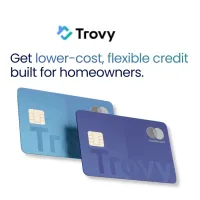Planning a Major Home Renovation? 3 Smart Ways to Finance It
From HELOCs to personal loans, here’s how to pay for a major home renovation without draining your savings.


Renovating your home can make your home safer and more enjoyable, and it may even boost your home’s value if you decide to sell. From updated kitchens to new roofs, the right improvements can enhance both your lifestyle and your investment.
However, rising material costs driven by tariffs and increased labor expenses mean home renovation projects are becoming more expensive. Careful planning is key to keeping your project on track and avoiding unpleasant financial surprises along the way.
We’ll walk through how to estimate renovation costs, plan for unexpected expenses, and explore smart financing options to help you pay for your project.
From just $107.88 $24.99 for Kiplinger Personal Finance
Become a smarter, better informed investor. Subscribe from just $107.88 $24.99, plus get up to 4 Special Issues

Sign up for Kiplinger’s Free Newsletters
Profit and prosper with the best of expert advice on investing, taxes, retirement, personal finance and more - straight to your e-mail.
Profit and prosper with the best of expert advice - straight to your e-mail.
How to plan and budget for your home renovation

Start by making a detailed list of your planned renovations, including the materials you’ll need, estimated labor costs, required permits, and any other expenses. Then, get at least three written quotes from different contractors.
These quotes will give you a general idea of what your renovation might cost, but it’s wise to expect the unexpected. Set aside an extra 10% to 20% of your total budget to cover unforeseen expenses that may arise during the project.
Saving enough cash to cover a major renovation — especially a large project like a full kitchen remodel — can be challenging. In addition to the money you’ve already set aside, several financing options can help you bridge the gap and start your renovation sooner without putting your plans on hold.
Tap home equity with a HELOC or cash-out refinance
You can use your home’s equity to finance a renovation with a HELOC or cash-out refinance, but you’ll need to understand the pros and cons of each.
A home equity line of credit (HELOC) allows you to borrow against a portion of your home’s equity, giving you access to funds as needed rather than a lump sum upfront. You’ll pay interest only on the amount you actually withdraw, making it a flexible option for projects with costs that may change as the renovation progresses.
Keep in mind that HELOCs usually have a variable interest rate during the draw period, which means the amount of interest you’re paying on the money you’ve borrowed can fluctuate.
Your home will also be used as collateral, so if you’re unable to repay the money you’ve borrowed, you could ultimately face foreclosure.
With a Trovy HELOC Card, your home's equity is in your wallet.
The Trovy HELOC card is linked to your home’s equity, giving homeowners flexible access to funds without an upfront draw. Borrow up to 85% of your home’s equity when needed, with no origination fees.
Most lenders limit how much equity you can take out in a cash-out refinance. In most cases, you can borrow up to 80% of your home’s appraised value, meaning you’ll need to keep at least 20% equity in the home after refinancing. This rule helps protect both you and the lender from taking on too much risk and ensures you maintain a healthy stake in your property.
A cash-out refinance allows you to take out a new, larger mortgage to replace your current one, giving you the difference in cash to use for your renovation. For example, if you owe $100,000 on your home and refinance for $175,000, you’d get $75,000 to use toward your renovation — and then begin making payments on the new $175,000 mortgage.
A cash-out refinance replaces your existing mortgage with a new, larger one, so it’s important to ensure you can comfortably manage the higher monthly payments. If today’s interest rates are higher than when you first took out your mortgage, your new loan could cost you more over time.
On the other hand, if rates have dropped, refinancing might actually lower your overall interest costs. Choosing a fixed interest rate can also give you peace of mind, since your payments will remain consistent throughout the life of the loan.
Don’t forget that you’ll also need to pay closing costs when you refinance. Refinancing costs average 3% to 6% of the loan principal.
Consider a personal loan if you lack home equity
If you haven’t built up much home equity yet, a personal loan is another financing option that can help cover the cost of a renovation. With a personal home improvement loan, you can quickly access a lump sum of cash, and you’ll pay interest on that balance as you make fixed monthly payments.
Personal loans typically come with fixed interest rates, so your monthly payments stay the same for the life of the loan. According to ProFed Credit Union, rates generally range from 5% to 36%, depending on factors like your credit score and lender. Borrowers with strong credit are more likely to qualify for lower rates, which can make a personal loan a more affordable option than using a credit card.
With an unsecured personal loan, you don’t have to provide collateral, unlike a HELOC, which uses your home as security. This makes personal loans a convenient option for smaller renovation projects.
However, loan terms and monthly payments can vary depending on the lender, so review all details carefully before committing to ensure the payments fit comfortably within your budget.
Use a credit card strategically for materials and tracking

Credit cards can be a valuable financing tool when covering the cost of materials, plus they make tracking expenses easier. For example, by applying for a 0% APR credit card that allows you to pay no interest for an introductory period, you can finance material purchases.
As long as you pay off your balance in full during that introductory period, you won’t pay interest on those purchases. Some credit cards offer cash back rewards, so you could earn some money back on purchases like fixtures or supplies.
You might choose to use different credit cards to separate project expenses and simplify tracking. Your credit card statements can help with monitoring your budget.
If you’re considering a HELOC, look for a lender that offers a credit card linked to your line of credit. These cards make it easy to access your HELOC funds as needed, allowing you to make purchases with a tap or swipe. Your payments are then based on the amount you’ve borrowed from your home’s equity.
One example is the Trovy card, a home-equity-backed line of credit that functions like a traditional credit card. You can use it at ATMs, in stores, or online to pay for materials, appliances and other renovation essentials.
Instead of taking out a lump-sum loan, the Trovy card lets you access your available funds gradually as your project progresses.
Keep your project on track financially
To keep your renovation on budget, track your spending closely using a budgeting app or spreadsheet. Update your costs regularly and enter expenses as soon as you make purchases. This will help you spot overspending early and make adjustments before your project goes too far off track.
Be sure to save all of your receipts as well. They may be useful for claiming tax deductions or documenting your home’s increased value when you sell. Consider digitizing your receipts with an app to stay organized and avoid losing important records.
Choosing the right financing to make your renovation a reality
Renovating your home can be a rewarding investment, improving both your comfort and your property’s value. But with rising costs, careful budgeting and smart financing are essential.
Whether you tap into your home equity, take out a personal loan, or use credit strategically, choose the option that best fits your financial situation and long-term goals. With the right plan in place, you can bring your renovation vision to life without putting unnecessary strain on your budget.
Explore and compare some of today's best refinance offers with the tool below, powered by Bankrate:
Related Content
Profit and prosper with the best of Kiplinger's advice on investing, taxes, retirement, personal finance and much more. Delivered daily. Enter your email in the box and click Sign Me Up.

Paige Cerulli is a freelance journalist and content writer with more than 15 years of experience. She specializes in personal finance, health, and commerce content. Paige majored in English and music performance at Westfield State University and has received numerous awards for her creative nonfiction. Her work has appeared in The U.S. News & World Report, USA Today, GOBankingRates, Top Ten Reviews, TIME Stamped Shopping and more. In her spare time, Paige enjoys horseback riding, photography and playing the flute. Connect with her on LinkedIn.
